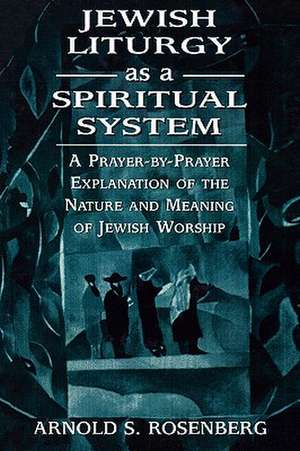Jewish Liturgy as a Spiritual
Autor Arnold L. Rosenbergen Limba Engleză Hardback – feb 1997
Preț: 685.04 lei
Preț vechi: 938.42 lei
-27% Nou
Puncte Express: 1028
Preț estimativ în valută:
131.10€ • 136.36$ • 108.23£
131.10€ • 136.36$ • 108.23£
Carte tipărită la comandă
Livrare economică 14-28 aprilie
Preluare comenzi: 021 569.72.76
Specificații
ISBN-13: 9781568219714
ISBN-10: 1568219717
Pagini: 288
Dimensiuni: 163 x 237 x 30 mm
Greutate: 0.6 kg
Editura: Rowman & Littlefield
ISBN-10: 1568219717
Pagini: 288
Dimensiuni: 163 x 237 x 30 mm
Greutate: 0.6 kg
Editura: Rowman & Littlefield
Notă biografică
Arnold S. Rosenberg is an attorney in private practice in San Francisco, California. He grew up a Conservative Jew in Rochester, New York, where he learned much of what he knows about Judaism from Rabbi Abraham J. Karp and Cantor Samuel Rosenbaum. After graduating from Cornell University, where he was elected to Phi Beta Kappa, he attended Harvard Law School and received his J.D. in 1976. Mr. Rosenberg spent the next four years as a poverty lawyer in a Mexican barrio in Chicago, Illinois. Following a stint as a labor lawyer in Chicago and New York, he moved to San Francisco, where he and his family have lived since 1983. He has two children, Julian and Nina.
Descriere
Readers of this book will emerge with a new awareness of what we as Jews are doing when we pray, why we are doing it, how we are supposed to be affected by prayer, how the prayers came to be as they are today, and how they differ among the major movements of American Judaism.
